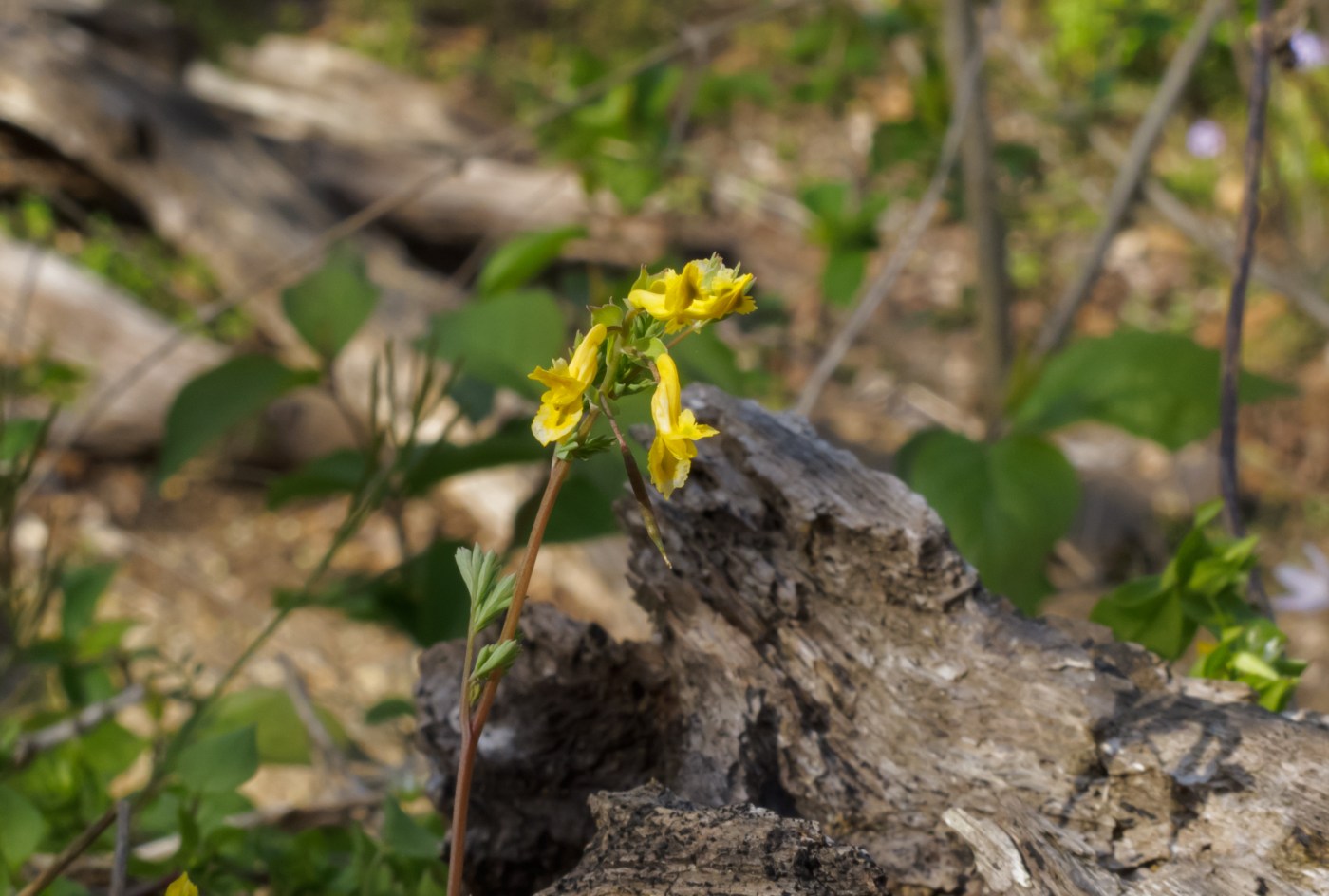
[Baltimore Sun] Garden Q&A: What is this wildflower?
Q: I saw this small yellow-flowering plant in the woods recently, but was wondering if it’s native, since so many pretty things happen to be sadly invasive. It wasn’t superabundant, so I’m guessing it’s not a weed. Do you recognize it?
A: This is yellow corydalis (also called pale corydalis, Corydalis flavula), and it is native and found in most of Maryland’s Piedmont and Mountain counties, plus about half of the Coastal Plain (not the lowest-lying areas). A plant’s abundance in natural areas isn’t a reliable indicator of whether it’s invasive, since we do have some aggressively-spreading native plants in addition to the invasive ones that take over disturbed areas.
As a native annual or biennial, an individual yellow corydalis plant is short-lived but can self-seed in habitats with a bit of soil disturbance that keeps its seeds germinating each year. Dainty flowers and foliage don’t get very tall and might lean as they reach full height, giving a clump a slight ground-covering habit. Given its fleeting nature, it may be hard to find if you want to add some to a native plant garden, though seeds might be available from specialty nurseries.
This is Maryland’s only native corydalis, but several non-native species used in gardens can seed around and behave invasively. The main culprit locally is Incised fumewort (corydalis incisa), whose flowers look slightly different and are plum-purple, though the foliage is similar.
Incised fumewort has been documented growing wild in several Maryland counties. Submitting observations on apps like iNaturalist would help natural land managers and Weed Warrior volunteers locate new populations. In some areas, it appears to be out-competing wildflowers like displacing our beloved Virginia bluebells. More information can be found on the Incised Fumewort page published by the National Park Service, which includes a leaf structure comparison to the native species you found.
Q: My hemlock has lots of white stuff on the branches between the needles. Is this that pest I’ve been hearing about? How do I treat it?
A: Hemlock woolly adelgid is the pest in question that creates white waxy residues around their bodies as they feed on juices from the tree. They reside on the twigs next to the foliage and are most visible on the undersides of the branches. As they reach adulthood and the females produce eggs, the waxy material becomes more prominent and trees can look quite white-flecked when populations are high.
You have a few options. Doing nothing and relying on natural predators alone is unlikely to be enough to keep a large population below damaging levels, and an infested tree (especially if stressed by poor growing conditions) could die in just a few years. Alas, plenty of our wild hemlocks have already succumbed to this invasive pest.
The tree could be sprayed with horticultural oil to help smother the crawlers, the “hatchling” stage of insects in this family that are the most mobile, hence the term. Such sprays will need to thoroughly coat the upper and lower surfaces of the foliage to work well. Multiple treatments will be needed, especially since there is a second-generation crawler period again around late spring.
Another method is to hire someone to apply a systemic pesticide to the tree, usually by soaking the roots or injecting the trunk so it’s absorbed and moved into the canopy. Pests then ingest the toxin when they feed. Many chemicals in this category are not legal for the general public to apply outdoors in Maryland, but certified pesticide applicators can. One treatment might last more than a full growing season, depending on the ingredient used. Hiring a professional is also prudent if the tree is too tall for you to reach with a sprayer.
If you feel it’s simplest to replace the tree, ideally look for other species, though the U.S. National Arboretum did recently introduce two hemlock cultivars, ‘Traveler’ and ‘Crossroad’, into the nursery trade that have resistance to this insect. They are hybrid hemlocks, having one American and one Asian parent species. Locally native alternative evergreens include Eastern redcedar (Juniperus virginiana) and American holly (Ilex opaca). No evergreen will be problem-free, but at least these two support wildlife and tend to be reliable in Maryland landscapes given that they are still abundant around the state.
University of Maryland Extension’s Home and Garden Information Center offers free gardening and pest information at extension.umd.edu/hgic. Click “Ask Extension” to send questions and photos.
